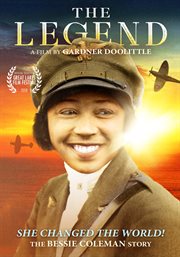Review by Booklist Review
One hundred years ago, the mail system was in jeopardy, and in this informational picture book, Esbaum takes readers back to a pivotal night. On the evening of February 22, 1921, Jack Knight was flying precious cargo--not a celebrity or jewels, but six sacks of mail! Law makers wanted to end air mail, saying that moving mail by train was safer and cheaper. But mail officials knew that planes could transport mail faster, and Jack Knight was part of a team on an all-day, all-night coast-to-coast race to save air mail. Visceral descriptions relate Knight's flying conditions in an open cockpit without modern technology: burning oil drums lighting runways, fog too thick to see through, and cold that froze his flight suit to the seat (he had to be cut out!). Innerst's equally dramatic illustrations alternate between airport scenes on the ground in yesteryear yellows and Knight's frigid night flying in luminous midnight blues. The story ends in success, with a concluding author's note and a time line offering more details about U.S. mail service.
From Booklist, Copyright (c) American Library Association. Used with permission.
Review by Publisher's Weekly Review
This fast-paced picture book outlines the landmark night flight of pilot James H. "Jack" Knight (1892--1945), who helped extend the life of the U.S. Air Mail Service by serving as a relay pilot in the first overnight cross-country U.S. airmail delivery. In snappy, climactic prose, Esbaum traces the obstacles Knight encountered, including bodily discomfort and an unavoidable blizzard in Illinois: "This is no ordinary mail flight. This is an all-day, all-night, coast-to-coast race to save America's struggling Air Mail Service." Innerst's atmospheric illustrations conjure the rough elements and close quarters in deep blues and cool gray washes, with fluid figures, stamped text, and finely brushed details adding texture. A riveting journey about an undersung aviator. Back matter includes creators' notes and a timeline sharing highlights in the history of the U.S. mail. Ages 7--10. (Mar.)
(c) Copyright PWxyz, LLC. All rights reserved
Review by School Library Journal Review
K-Gr 3--A hundred years ago, America's lawmakers wanted to end air mail, due to the danger and expense; Jack Knight was one of the pilots who participated in a series of overnight flights to prove that air mail was faster than trains. Readers may rightly wonder if speedier mail service was more important than pilots' lives, but Jack's flights from Nebraska to Chicago, through fog and a blizzard, make an exciting story. The text maintains a tense, suspenseful pace, and the watercolor, ink, pencil, rubber stamp, and digital illustrations bring the journey to life with swirling snow in the dark sky and lights on the runways below. Extensive back matter includes an author's note, photos, highlights in the history of the U.S. mail, bibliography, and illustrator's note. VERDICTThis historical adventure has great appeal and may renew kids' interest in the postal service; a valuable addition to nonfiction collections.--Jenny Arch
(c) Copyright Library Journals LLC, a wholly owned subsidiary of Media Source, Inc. No redistribution permitted.
Review by Horn Book Review
In 1921, a perilous coast-to-coast airplane relay pushed a handful of pilots to their limits. If successful, the publicity stunt would prove that the U.S. Air Mail Service was superior to its locomotive counterpart, quelling concerns of cautious politicians. Esbaum's conversational present-tense narration places readers in the middle of the action alongside Jack Knight, the only pilot able to complete two legs of the relay (before being relieved), from Nebraska to Illinois, all the while braving frigid temperatures, snowstorms, and unfamiliar terrain. "Jack wipes slush from his goggles. He peers ahead, but can no longer see the horizon through the swirling snow...Will he find it before the plane runs out of fuel and crashes?" Harrowing details, such as snow-covered runways, miscommunication between airfields, and Knight literally freezing to his biplane's seat, amplify the ultimate success of the daring pilot. Innerst's mixed-media illustrations, primarily rendered in watercolor, ink, and pencil, are expressive and atmospheric. Rather than depicting objects and characters realistically, he manipulates their sizes, shapes, and colors to accurately reflect the mood of any given scene. Tight framing of Knight crammed into his cockpit is informative and discomforting, and effectively portrays the rudimentary nature of aircraft at the time. A thrilling and well-told moment in the history of information distribution across the United States. Back matter includes an author's note, highlights of U.S. mail history, a bibliography, an illustrator's note, and photo credits. Patrick Gall May/June 2022 p.161(c) Copyright 2022. The Horn Book, Inc., a wholly owned subsidiary of Media Source, Inc. No redistribution permitted.
(c) Copyright The Horn Book, Inc., a wholly owned subsidiary of Media Source, Inc. No redistribution permitted.


